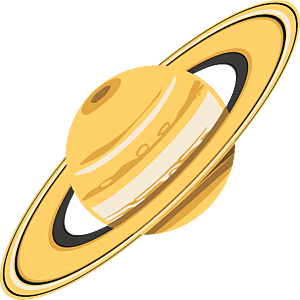The Downlink • Sep 10, 2021
Looking forward to looking into deep space
Space Snapshot

This stunning image of Centaurus A, the fifth-brightest galaxy in the sky, combines data from x-ray, optical, infrared, and radio wavelengths. At 13 million light-years away from Earth, it is an ideal target to study an active galactic nucleus — a supermassive black hole emitting jets and winds — with the James Webb Space Telescope. Learn more in the latest issue of The Planetary Report. Image credit: NASA et al.
You love space, now take action
This weekly newsletter is your toolkit to learn more about space, share information with your friends and family, and take direct action to support exploration. Anyone can subscribe at planetary.org/connect to receive it as a weekly email.
Mission Briefings


Perseverance got its first Martian samples. After a failed first attempt involving a rock that was too crumbly, the NASA rover successfully extracted two cores from a briefcase-sized rock named “Rochette” (pictured, after the first extraction). Perseverance stowed the cores onboard for now; later, it will leave a collection of samples on the surface for future missions to return to Earth. Image credit: NASA/JPL-Caltech.

China’s Chang’e-5 spacecraft is on the move again. After helping return lunar samples to Earth last year, the probe’s orbiter flew to a spot between the Earth and Sun to test orbit control technologies. Now it’s heading back to the Moon and may either enter lunar orbit again or visit the near-Earth asteroid that China plans to collect a sample from in 2024.

The James Webb Space Telescope has a launch date of December 18, 2021. The new date comes on the heels of NASA’s announcement that pre-flight testing of the observatory is complete. Arianespace, which manufactures the Ariane 5 rocket that will blast Webb into space, has one more scheduled launch before Webb flies.

Cosmonauts completed the first two of 11 planned spacewalks to activate Nauka, the International Space Station’s new science module. The long-delayed module made headlines when it inadvertently fired its thrusters after arriving at the space station in July. The spacewalkers installed power and data cables along with handrails that will be used during future spacewalks.
From The Planetary Society


The newest issue of The Planetary Report is here! The September equinox issue is all about space telescopes, with in-depth stories on the upcoming James Webb mission, the inspiring story of citizen advocacy for the Hubble, how images from space telescopes inspire art, and much more. Planetary Society members receive a physical copy of the magazine each quarter, but everyone can access the digital version online for free. Pictured: Engineers examine a full-sized test unit of the James Webb Space Telescope's sunshield following a successful deployment test in 2014. Image credit: NASA/Chris Gunn.

Looking to study Mars on a dime? NASA hopes to reduce the price of exploring Mars with a mission called ESCAPADE. The mission’s twin spacecraft “Blue” and “Gold” will work with orbiters already circling Mars to answer deep questions about the evolution of that world's formerly thick atmosphere and the effects of solar radiation. This week on Planetary Radio we talk to principal investigator Rob Lillis whose team at the University of California, Berkeley will send the probes to Mars in 2024 for less than $80 million.

How do cultural narratives influence space exploration? Social science and space outreach expert Linda Billings joins the latest episode of Planetary Radio: Space Policy Edition for a fascinating discussion of the ways that culture shapes humanity’s efforts to explore beyond Earth. Plus, Planetary Society chief advocate Casey Dreier unpacks recent space policy news, including Blue Origin’s efforts to sue NASA.

Where are all the aliens? That’s the big question that the Fermi paradox and the Drake equation try to help us answer. The latest article from Planetary Society editorial director Jason Davis explores how these two concepts help us understand our place in the universe and guide the search for life beyond Earth.
What's Up

In the west, during the early evening you can find super-bright Venus. Mercury appears to its lower right, very near the horizon soon after sunset. In the east, look for bright Jupiter with yellowish Saturn to its right. Learn more at planetary.org/night-sky.
Help LightSail 2 Sail On!

There’s still time to help make LightSail 2’s extended mission possible. The Planetary Society’s crowdfunded solar sailing mission is still in orbit and we need your help to capture the science from this next phase and share its lasting impact with the world.
Your support will keep LightSail 2 flying, share the science of solar sailing with NASA and other space explorers, and inspire people around the world to get involved in amazing projects like this. Join the Extended Mission Team and support this historic project with your gift today.
Wow of the Week

This painting from Planetary Society member Barbara Fee Sheehan depicts her interpretation of what the faraway GN-z11 galaxy might look like, along with the James Webb Space Telescope. Sheehan is hopeful that the JWST may be able to observe GN-z11, the oldest and most distant galaxy known to us. Studying this galaxy that is 32 billion light years away from Earth would yield new insights about the early ages of the universe. You can also find this painting on the back cover of the September 2021 issue of The Planetary Report. Image credit: Barbara Fee Sheehan.
Do you have a suggestion for the Wow of the Week? We’re looking for space-related art, music, gadgets, quotes, fashion, burning questions, brief sci-fi passages, or anything else that will make our readers go “Wow!” Send us your idea by replying to any Downlink email or writing to [email protected], and please let us know if you’re a Planetary Society member.


 Explore Worlds
Explore Worlds Find Life
Find Life Defend Earth
Defend Earth


